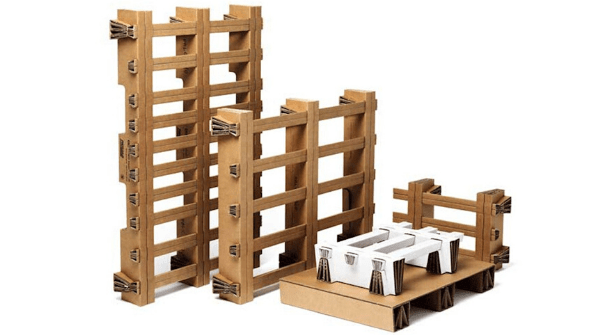Importance of corrugated insulated boxes for shipping perishable goods
Importance of corrugated insulated boxes for shipping perishable goods
Importance of corrugated insulated boxes for shipping perishable goods:
Corrugated insulated boxes are essential for shipping perishable goods because they provide temperature control, protection, and insulation to ensure that products remain fresh and safe during transit. Here’s how you can design and use corrugated insulated boxes for shipping perishable goods effectively:
• Choose the Right Materials: Corrugated Box: Select high-quality corrugated box with the appropriate flute size (usually double-wall or triple-wall) for enhanced insulation and strength.
Insulation Material: Line the interior of the box with thermal insulation material. Common options include foam, foil-backed bubble wrap, or insulated liners specifically designed for shipping.
High Quality
• Customize the Size and Design: Design the box to accommodate the specific size and shape of your perishable goods. Customizing the box size minimizes empty space, which can help maintain temperature control. Consider adding partitions or dividers to keep different items separate within the same box, if needed.
• Sealing and Closures: Ensure a secure closure with strong adhesive or tape to prevent any air leakage that could affect temperature control. Use tamper-evident seals if necessary to guarantee the integrity of the package.
• Temperature Monitoring: Include a temperature monitoring device or indicator inside the box. This can be a simple temperature strip or a more advanced data logger, depending on the sensitivity of the perishable goods.
• Labeling and Documentation: Clearly label the box with information about the contents, temperature requirements, and any special handling instructions. Include documentation that outlines the ideal storage and handling conditions for the perishable items.
• Packaging Accessories: Use absorbent pads or gel packs to manage moisture and condensation inside the box, which can affect the quality of perishable goods. If shipping frozen items, consider including dry ice or gel packs designed for deep freeze temperatures.
• Testing and Quality Assurance: Perform quality checks to ensure that the insulation and temperature control elements are working as intended before shipping perishable goods. Conduct temperature tests or simulations to verify that the packaging maintains the required temperature range during transit.
• Regulations and Compliance: Familiarize yourself with shipping regulations and requirements for perishable goods, especially if you are shipping internationally. Compliance with regulations is critical to avoid delays and ensure food safety.
• Environmental Considerations: Choose packaging materials that are environmentally friendly and can be easily recycled or disposed of responsibly.
• Shipping Method: Select a shipping method that aligns with the perishable goods’ temperature requirements. Expedited or refrigerated shipping may be necessary for highly sensitive items.
• Customer Instructions: Provide clear instructions to the recipient on how to handle the package upon delivery, including immediate refrigeration or freezing if required.
• Feedback and Continuous Improvement: Gather feedback from both senders and recipients to identify areas for improvement in your packaging and shipping process.
Corrugated insulated boxes play a vital role in ensuring the safe and fresh delivery of perishable goods. By carefully designing, testing, and monitoring these boxes, you can maintain product quality and customer satisfaction while adhering to food safety regulations.

Comments
Post a Comment